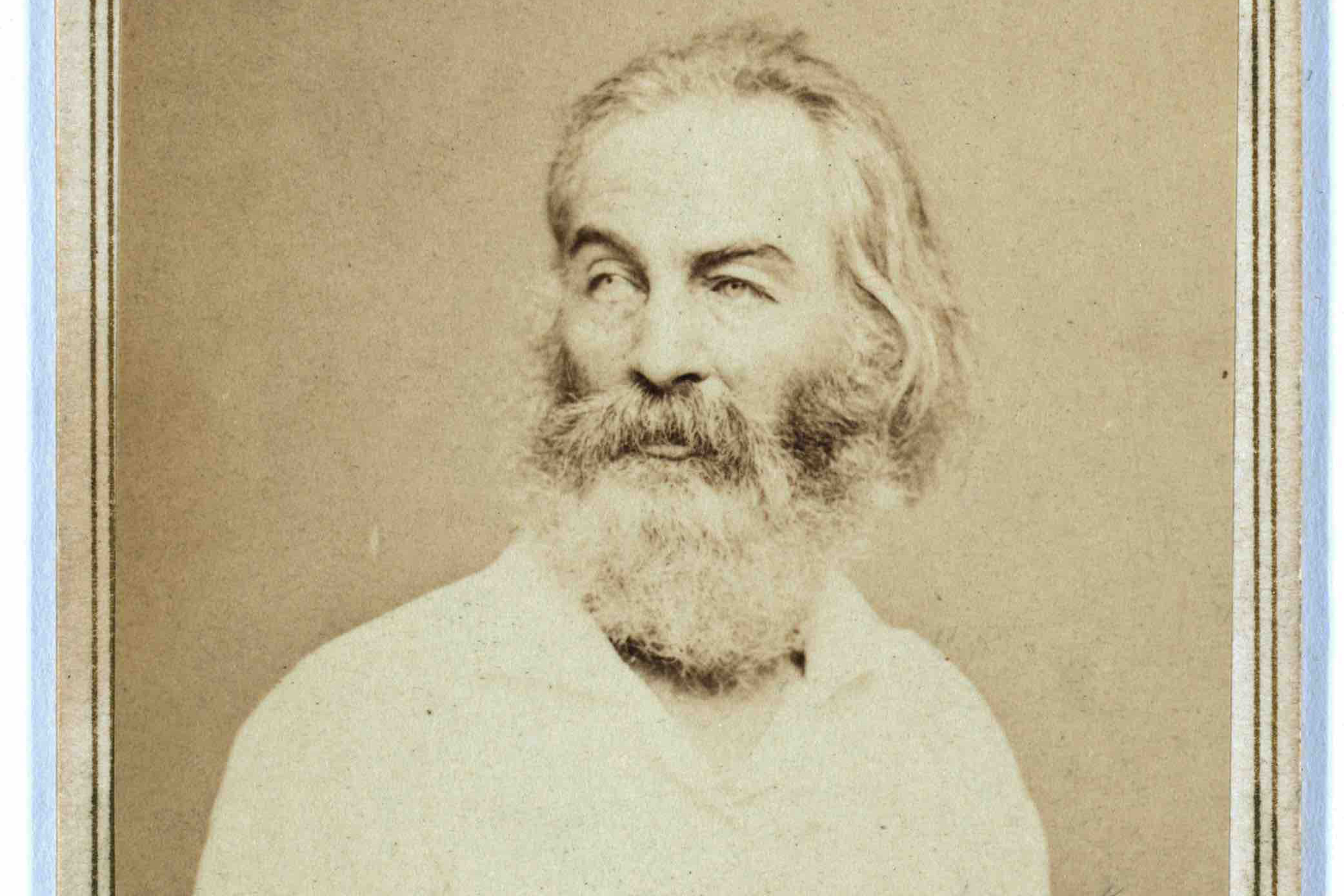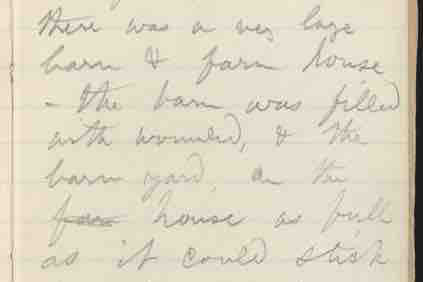Flashback Friday - Walt Whitman: The (Queer) Wound Dresser

Tyler Gaedecke (BSN '20) received an Undergraduate History Award for his paper examining Civil War nurse, poet, and queer American Walt Whitman. We excerpt it below. Read the entire paper here: The (Queer) Wound Dresser: Expanding Walt Whitman's Place in Nursing History
If asked to identify an example of a well-known LGBTQ+ person in the nursing profession’s history, very few people would immediately have a name in mind. If queer individuals are people who fall outside of norms surrounding sex and gender, one could guess that these people would find nursing’s rigid and gendered history unforgiving. However, to assume that such queer nurses did not exist reflects a failure to understand that history has a tendency to gloss over difference.
A quick reach into America’s history reveals that the answers may be under our noses if we take the time to revisit them. In this case, one can look to Walt Whitman. An incredibly well-known American poet, his writing also often identifies him as a prominent queer individual in the country’s history—but he was also a volunteer nurse.
Though Walt Whitman’s image as an iconic, queer American poet is well-known, his time as a nurse in the Civil War is far less prominent. Further, he is rarely, if ever, recognized specifically as a queer nurse. Identifying and analyzing Whitman’s particular intersection between identity and profession may serve to confound potent and gendered images of nursing.
Walt Whitman’s life is the story of a radical thinker and influential writer in America’s history. Most famous for his book of poems titled Leaves of Grass, his free-verse writing in the 1850s sang of the still-new nation and his democratic vision for a unified country in all of its diversity. Though he’d continue to edit and re-release this book for the rest of his life, the tone he set in Leaves of Grass is part of the impact that has made him so influential. His romance with democracy and ideas of equality that may have been radical at the time created waves that reverberate today. In “Walt Whitman’s Different Lights,” Robert Martin presents some of Whitman’s writing as “a confrontation of the reader with the reality and diversity of experience.” By reminding readers of the diverse nature of their new immigrant nation, he clings to the core ideals of democracy—even though a modern lens may deeply incriminate such romantic claims about the early United States. Yet, this does not diminish the power of his words, especially in the divided and tumultuous times of the Civil War.
That same Civil War tension set the stage for more radical work. He had a public platform with Leaves of Grass, and he went forth to capitalize on it. His writings made deep connections between democracy and sexuality, in many instances by writing very homoerotic poems that capitalized on a violently masculine war which simultaneously “exposed men’s physical and emotional vulnerability.” By pushing boundaries of the way men may show affection to one another, Whitman used his platform to add his own addendum to the idea of democracy—sexual freedom. Political and violent tensions became an opportunity for him to emphasize love of all kinds in his calls for unity. However, there are parts of his story that are less often told. His intimate relationships with the Civil War, the ideas it helped him create, and the men that fought in it were no coincidence. His radical writing was deeply influenced by all of his experiences and, as a surprise to many, Walt Whitman was a volunteer nurse during the war.

It started in 1862. A newspaper list of the wounded made him concerned that his brother was amongst them, and upon finding his brother healthy realized just how terrible the military hospital conditions were. This empowered his decision to volunteer. When he got there, the little things made all the difference. Whitman estimated that he saw beyond 80,000 patients in his time as a hospital visitor, doing anything from writing letters for the wounded to bringing them candy and fruit. These things likely meant a lot to patients as they are characteristic of traditional, holistic nursing care. However, his involvement in care seems to have gone even further.
In his 1865 poem “The Wound Dresser,” Whitman alludes to clinical nursing care when he says, “I dress the perforated shoulder, the foot with the bullet-wound, / Cleanse the one with a gnawing and putrid gangrene…While the attendant stands behind aside me holding the tray and pail.” Further lines describe other wounds he had addressed including fractured thighs and knees. It would appear that Whitman even fits more modern descriptions of the nursing role. It is also very clear that he thought highly of this nursing role. He said himself in an 1863 New York Times article that “a benevolent person, with the right qualities and tact, cannot, perhaps, make a better investment of himself, at present, anywhere upon the varied surface of the whole of this big world, than in these military hospitals among such thousands of most interesting young men.” Nursing was not just a small part of his life that he spent a little time on—he dedicated years to it. With such extensive sacrifice and contribution, it is refreshing to see his name make it into in current nursing history books.
However, if this gem is no secret to nursing history, and is in fact additionally referenced by queer history work, it becomes more curious that no additional significance has been attached to this intersection of identity. Nursing history references to Whitman do not appear to make any reference to the fact of his queerness. And there is a dearth of literature on queer nursing history. As a result, we continue to be left wondering: Where are the queer nurses? While Whitman may be only somewhat of a “hidden figure” in nursing, his experience as an American nurse in a sexual minority is.
Images are courtesy of the Library of Congress.
